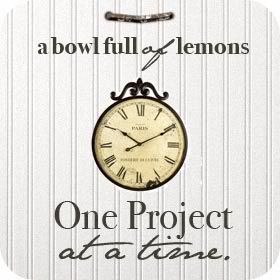Linking up with:
~~~~~~~~~~~~~~~~~~~~~~~~~
I wanted to share my Hosta's this week.
This year they just popped up and are so much bigger this year.
Most of these were planted from small pots 5 years ago except where noted.
The next few are along the front of the house on the North Side.
I love this Blue Hosta!
This is a side shot of the ones along the front of the house.
The next few are from in the entry area.
I wanted to show these - these were a tray that had been thrown in a dumpster. There were 24 in the flat and we were able to save about half of them...they are doing great now!
This is hidden - but I love this Hosta - oops you can see my foot - sorry about that.....
Thesse Hosta's are on top of the pond area.
These are right behind the pond - they are all starts from the Hosta's out front.
Some cute Hosta's by the fence just to the right of the pond - these are Hosta's that were in the flat that had been thrown away.
These are from the Hosta Quad in the side yard -the smaller ones are from t he throw away flat. . Side shot of Hosta Quad
You can look at my header and see how much these have grown.
You can look at my header and see how much these have grown.
This Hosta is in the Wood land - I showed this last week.
Thanks for letting me share my Hosta's with you.
~~~~~~~~~~~~~~~~
Today I am grateful for all the wonderful green things that call my yard their home!
~~~~~~~~~~~~~~~~~~
Instructions on gathering Hosta Seeds
COLLECTING SEED
Collecting, drying and cleaning hosta seed is not difficult. When one sees pods on flower scapes, the first question coming to mind is "When will these pods be ripe enough to harvest the seed?" Generally speaking, it takes at least thirty days, depending on variety and environment for seeds to be fully ripe, even if the pods are still green. The best way to know when to collect the seed is watching the bottom pods. When the pods start changing color towards a dark brown, they are ripe. When the pod starts to split open, the seed should be collected. If left for a day after pods have split open, the seed will fall on the ground and be lost.
After the seed pods have all developed (at least 3 weeks after the last bloom has faded), some people prefer to cut the whole spike, drop it inside a brown paper bag and place it in a cool dry room to dry out completely. Using regular sheets of paper with the edges folded up box -like; the collected pods can be dumped inside. Drying seed inside the house, where it is warm and dry, results in pods splitting open within two or three weeks. Dumping the seedpods into a box and shaking with some enthusiasm will result in seeds coming out of pods. Dumping the seeds onto a spaghetti strainer, having ¼¼ inch holes, results in seed falling through and the pods remaining behind.
However, if you are hybridizing, each pod must be treated separately and kept with a label indicating the pod x pollen parents. It is important to have good labels when working with hosta seedlings, since it can take as long as six years before the seedlings are at their mature stage. Using plastic labels, and writing on these with a waterproof marker is not nearly good enough. Outdoor elements make such a label unreadable. The sun's rays make the plastic brittle and then they break. Aluminum labels will not rust and will last forever. You can scratch your information right into aluminum labels with a nail or a carbide tip 'Scriber'.
The seed is now ready for sowing. If you do not plan to sow immediately, put the seed in the plastic bag, then label and seal it. Place the bags in a cool environment. Some nurseries will store their seed in the freezer so it remains fresh.
Hostas, being the perennials they are make this pleasure a lasting experience. New developing characteristics appear each succeeding year as the hybrids reach maturity
http://perfectperennials.tripod.com/id10.html
Lots more info on this website.
~~~~~~~~~~~~~~~~~~
Instructions on gathering Hosta Seeds
COLLECTING SEED
Collecting, drying and cleaning hosta seed is not difficult. When one sees pods on flower scapes, the first question coming to mind is "When will these pods be ripe enough to harvest the seed?" Generally speaking, it takes at least thirty days, depending on variety and environment for seeds to be fully ripe, even if the pods are still green. The best way to know when to collect the seed is watching the bottom pods. When the pods start changing color towards a dark brown, they are ripe. When the pod starts to split open, the seed should be collected. If left for a day after pods have split open, the seed will fall on the ground and be lost.
After the seed pods have all developed (at least 3 weeks after the last bloom has faded), some people prefer to cut the whole spike, drop it inside a brown paper bag and place it in a cool dry room to dry out completely. Using regular sheets of paper with the edges folded up box -like; the collected pods can be dumped inside. Drying seed inside the house, where it is warm and dry, results in pods splitting open within two or three weeks. Dumping the seedpods into a box and shaking with some enthusiasm will result in seeds coming out of pods. Dumping the seeds onto a spaghetti strainer, having ¼¼ inch holes, results in seed falling through and the pods remaining behind.
However, if you are hybridizing, each pod must be treated separately and kept with a label indicating the pod x pollen parents. It is important to have good labels when working with hosta seedlings, since it can take as long as six years before the seedlings are at their mature stage. Using plastic labels, and writing on these with a waterproof marker is not nearly good enough. Outdoor elements make such a label unreadable. The sun's rays make the plastic brittle and then they break. Aluminum labels will not rust and will last forever. You can scratch your information right into aluminum labels with a nail or a carbide tip 'Scriber'.
The seed is now ready for sowing. If you do not plan to sow immediately, put the seed in the plastic bag, then label and seal it. Place the bags in a cool environment. Some nurseries will store their seed in the freezer so it remains fresh.
Hostas, being the perennials they are make this pleasure a lasting experience. New developing characteristics appear each succeeding year as the hybrids reach maturity
http://perfectperennials.tripod.com/id10.html
Lots more info on this website.















































9 comments:
Nice selection of hosta! Jean
Beautiful plants! I love how you have some of the hostas peeking out over the rocks.
Your rescued hostas are great! In fact they all look wonderful.
I can't imagine a garden without at least a few hostas... there is an entire world of hostas that many gardeners aren't even aware of... so often I meet folks who think there are perhaps a hand full of cultivars and are really amazed when they learn there are so many more and such a wonderful variety to be had! I enjoyed your post and hosta collection... Larry
Great variety of hostas! Lucky you to have found the tray of hostas. Thank you for sharing the information about seed collecting from hostas. I've never done it before but I might this year now that I know how!
Your hostas are lovely, Paula. I enjoyed reading about growing hosta from seed.
I have just started increasing my hosta collection now that there is no grass in the backyard. You have lots of nice ones and they're pretty easy care too.
Collecting the seeds from hostas is not something I've done before, could be fun to gather a few this fall.
Nice collection of Hosta's and rescued plants are wonderful!
We always grew hostas when we lived in the UK, love the variations in greens as shown in your photos.
Post a Comment